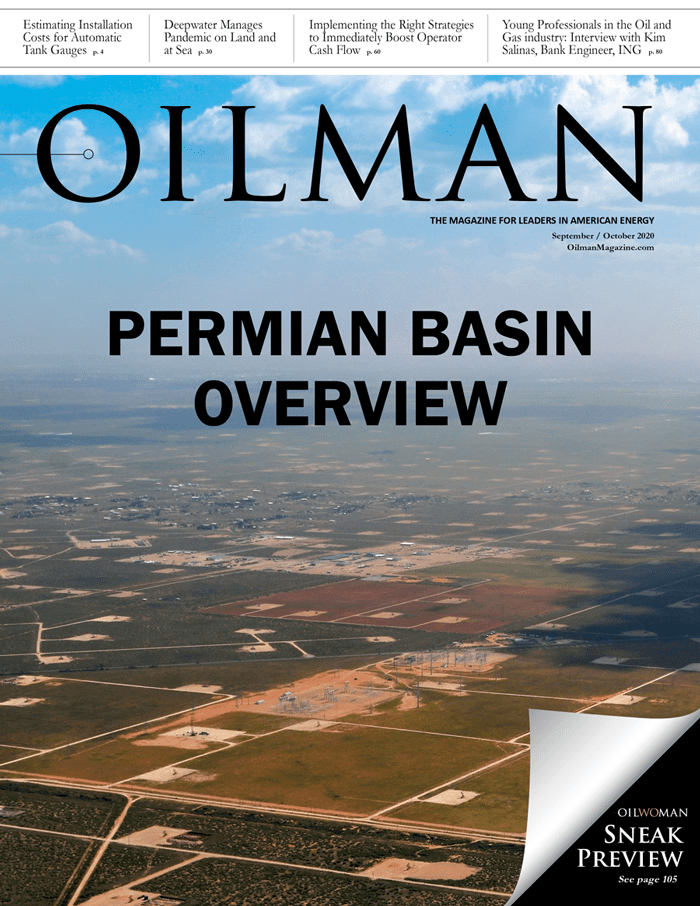The COVID-19 pandemic has put many oil and gas companies in financially difficult positions. In response to low oil prices and a decline in earnings, oil and gas companies should understand several tax provisions that could help them increase liquidity by producing a tax refund, reducing tax liability or deferring certain tax payments. This includes new tax changes in the CARES Act as well as several established tax provisions that companies can often overlook.
Deductions
Several tax provisions can help oil and gas companies offset prior tax periods and increase deductions.
NOL Carryback: The CARES Act includes a number of tax changes that can help oil and gas companies reduce their tax liability and possibly generate a tax refund. A key provision is the reinstatement of the net operating loss (NOL) carryback under IRC Section 172(a). Companies can now carry back NOLs incurred in 2018, 2019 and 2020 for up to five years and offset up to 100 percent of taxable income for the years to which the carryback is applied.
Business interest deduction: The CARES Act increased the adjusted taxable income portion of the business interest deduction limitation under IRC Section 163(j) from 30 to 50 percent for taxable years 2019 and 2020; this is limited to 2020 for partnerships. The Act also allows businesses to use their taxable income from 2019 (rather than 2020) in tax year 2020 for purposes of applying the 50 percent limitation. The increased limits for the business interest deduction is especially helpful for oil and gas companies with extensive debt financing.
Bonus depreciation: The Tax Cuts and Jobs Act (TCJA) increased the bonus deprecation to 100 percent for qualified property acquired and placed in service after September 27, 2017, and before January 1, 2023. Oil and gas producers should consider whether using their bonus depreciation deduction can help them produce or increase an NOL carryback. This requires them to weigh the benefit of creating a current year NOL through bonus depreciation or choosing to elect out of the bonus. Companies should also include future year forecasting to determine the effect of future depreciations.
Oil and gas companies often take bonus depreciation when they can create an NOL carryback that produces a tax refund or when partnership investors depend on flow-through losses to offset other income. Companies often elect out of bonus depreciation when they do not have prior year income to offset with an NOL carryback or if the losses would shift investors to a lower tax rate.
Expired or abandoned leases: Oil and gas companies can find additional tax reductions by deducting as an ordinary loss the adjusted tax basis of expired leases or the costs of abandoning a lease. Companies should review their oil and gas leases to determine which leases have expired or been abandoned during the tax year. This requires an examination of the facts and circumstances around leases that have a prolonged period of inactivity or for which the company does not have plans to develop or hold for economic gain.
Capitalize intangible drilling costs: Oil and gas companies have the option to either deduct or capitalize intangible drilling costs (IDCs), which include labor costs, ground preparation and similar costs in the preparation of a well. Typically, most companies deduct IDCs. However, in an environment of low prices and low profitability, oil and gas companies should consider the tax effect of capitalizing IDCs in order to maximize the tax rate benefit over the 60-month amortization period. This option applies to domestic wells only, as foreign IDCs must be capitalized.
Companies should consider capitalization if the IDC deduction would create an NOL without a carryback benefit or put the taxpayer in a lower tax rate bracket. Investors should also consider capitalization if the IDC deduction would put them in a position where there is an Alternative Minimum Tax (AMT) Excess IDC Preference that is not deductible for AMT purposes. This is common in tax years with high IDCs or low taxable income.
Taxpayers that received income through a flow-through entity can also elect to capitalize. As part of their decision making process, they should analyze the prior tax years for NOL carryback potential, the current tax year for the tax rate bracket and excess IDC position, and future tax years to assess the future benefit of IDC amortization.
Tax Credits
Oil and gas companies also should examine several key tax credits that can help them reduce their tax liability and boost liquidity.
Alternative Minimum Tax (AMT) credit refunds: The TCJA repealed the corporate AMT for taxable years after 2017, but allowed corporations to recover AMT credits after 2017 and before 2022 with credits fully refundable in 2021. The CARES Act allows corporations to accelerate to 2019 claims for fully refundable corporate AMT credits with the option to claim the credits in 2018.
Marginal well production credit: Natural gas producers can receive tax credits under IRC Section 45I for production from marginal wells, which are low producing wells as defined under IRC Section 613A(c)(6). An owner of a marginal well may claim the credit any time within three years of the due date (excluding extensions) of its original or amended return. Taxpayers can file an amended return, if they filed a return, but did not claim the credit or claimed the credit in an amount other than the IRS applicable credit amount for the tax year. They also can carry back unused credits to each of the preceding five tax years and then carry the remaining credit forward to each of the 20 tax years after the year of the credit. The credit for crude oil was phased out for tax years beginning in 2018, but natural gas producers should review their properties to identify which wells are eligible for the tax credit and whether they have claimed the credit for eligible marginal wells on past returns. They also should analyze their wells in order to accurately calculate the allowable tax credits.
Refunds and Payment Extensions
Oil and gas companies in need of immediate relief should consider taking advantage of established tax provisions that allow for certain refunds and payment extensions.
Quick refund of estimated tax overpayment: Companies can improve short-term liquidity by applying for a quick refund, if the estimated tax overpayment is at least 10 percent of the expected tax liability, and that amount is at least $500. Companies in this position must file Form 4466, Application for Quick Refund of Overpayment of Estimated Taxes, after the end of their tax year and before their filing date, and the IRS generally acts on the request within 45 days of filing.
2019 tax payment extension: Companies that owe taxes for 2019, but expect an NOL in 2020 that can be carried back to offset the 2019 tax, can defer the 2019 tax payment by filing Form 1138, Extension of Time for Payment of Taxes by a Corporation Expecting a Net Operating Loss Carryback. The postponed payment cannot exceed the expected overpayment from the NOL carryback, and only tax payments that are due after Form 1138 is filed are eligible for an extension. Companies must file Form 1138 after the start of the tax year of the expected NOL but before the payment deadline for the tax of the preceding tax year. The IRS must examine the request within 90 days of filing.
Payroll Tax Provisions
In addition to provisions that can help oil and gas companies increase deductions, the CARES Act includes an employee retention credit and a deferral for payroll tax payments that could help them retain employees during the downturn.
Employee retention credit: The Employee Retention Credit (ERC) is a fully refundable tax credit equal to 50 percent of “qualified wages” paid by an “eligible employer” to employees after March 12, 2020, and before January 1, 2021. The credit is available to employers whose operations have been fully or partially suspended as a result of a government order limiting commerce, travel or group meetings, or who have experienced a greater than 50 percent reduction in quarterly receipts, measured on a year-over-year basis. The maximum amount of qualified wages, which can include certain health plan expenses, is $10,000 per employee.
The tax benefit differs according to the size of the company. For employers that had an average number of full-time employees (within the meaning of IRC Section 480H) of 100 or fewer in 2019, wages paid to any employee can qualify. However, for employers that had an average number of full-time employees greater than 100 in 2019, only wages paid to those employees that are not providing services may qualify.
Payroll tax payment deferral: Employers can also defer over two years the payment of the employer’s portion of the Social Security payroll tax due on employee wages paid between the March 27, 2020, and December 31, 2020. Taxpayers must pay half of the total amount by December 31, 2021, and the other half by December 31, 2022.
Headline photo courtesy of Weaver
Rob Myatt, CPA is the partner-in-charge, Energy Services, for Weaver, the largest independent accounting firm in the southwest. He is an active member of the Texas Society of Certified Public Accountants and the American Institute of Certified Public Accountants. He is also an active member of the Council of Petroleum Accountants Society (COPAS) and the Young Professionals in Energy of Dallas. Myatt holds a master
of science in tax accounting and a bachelor of business administration in accounting, both from Texas Tech University. He can be reached at rob.myatt@weaver.com.







